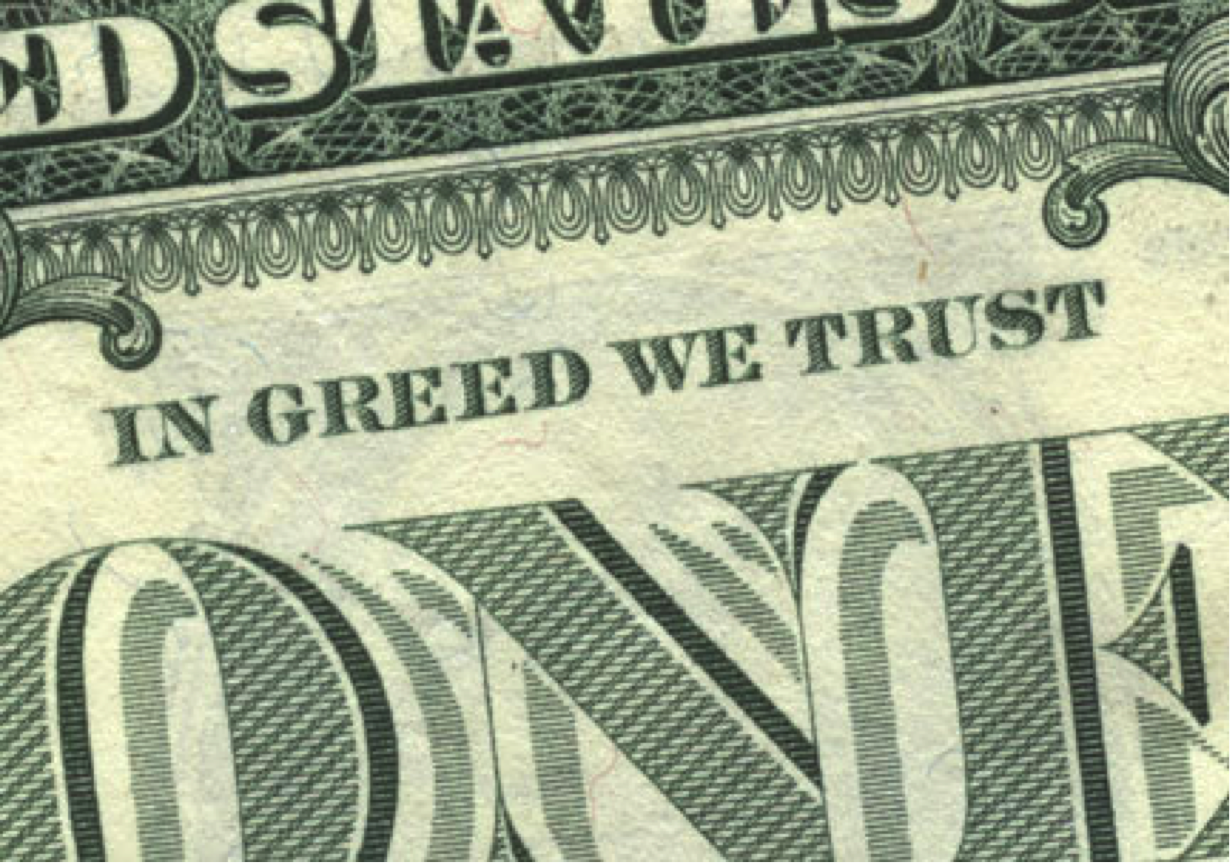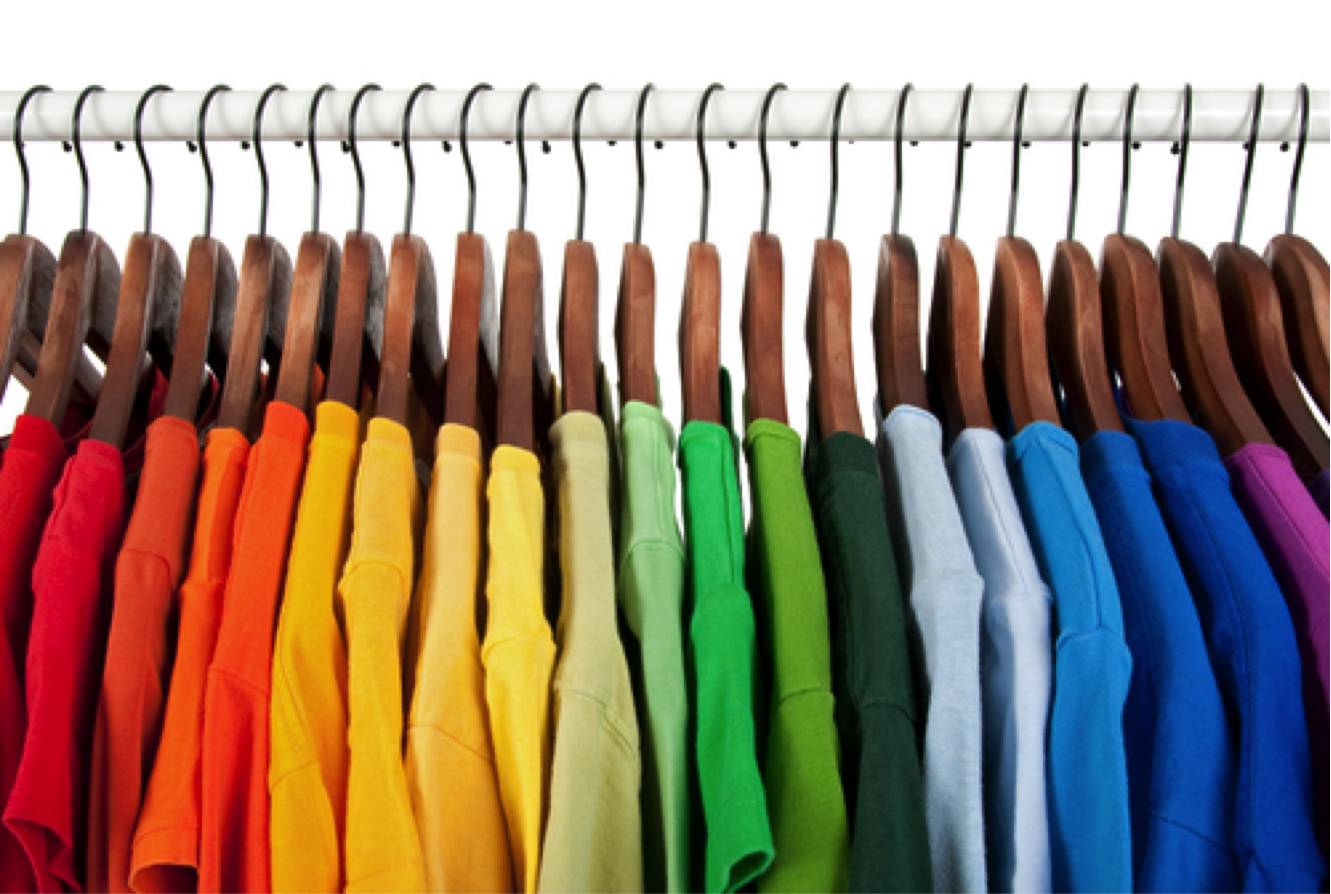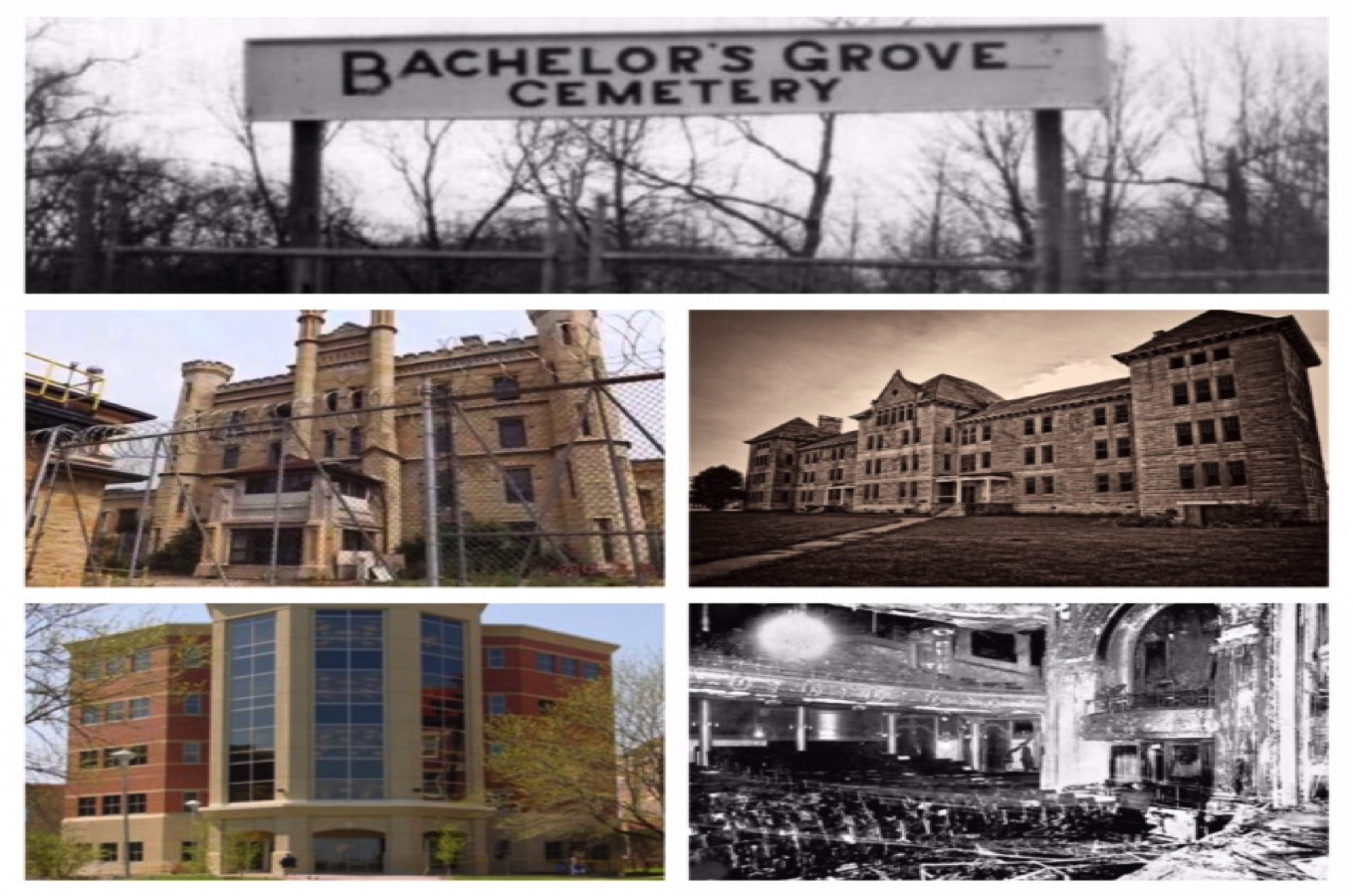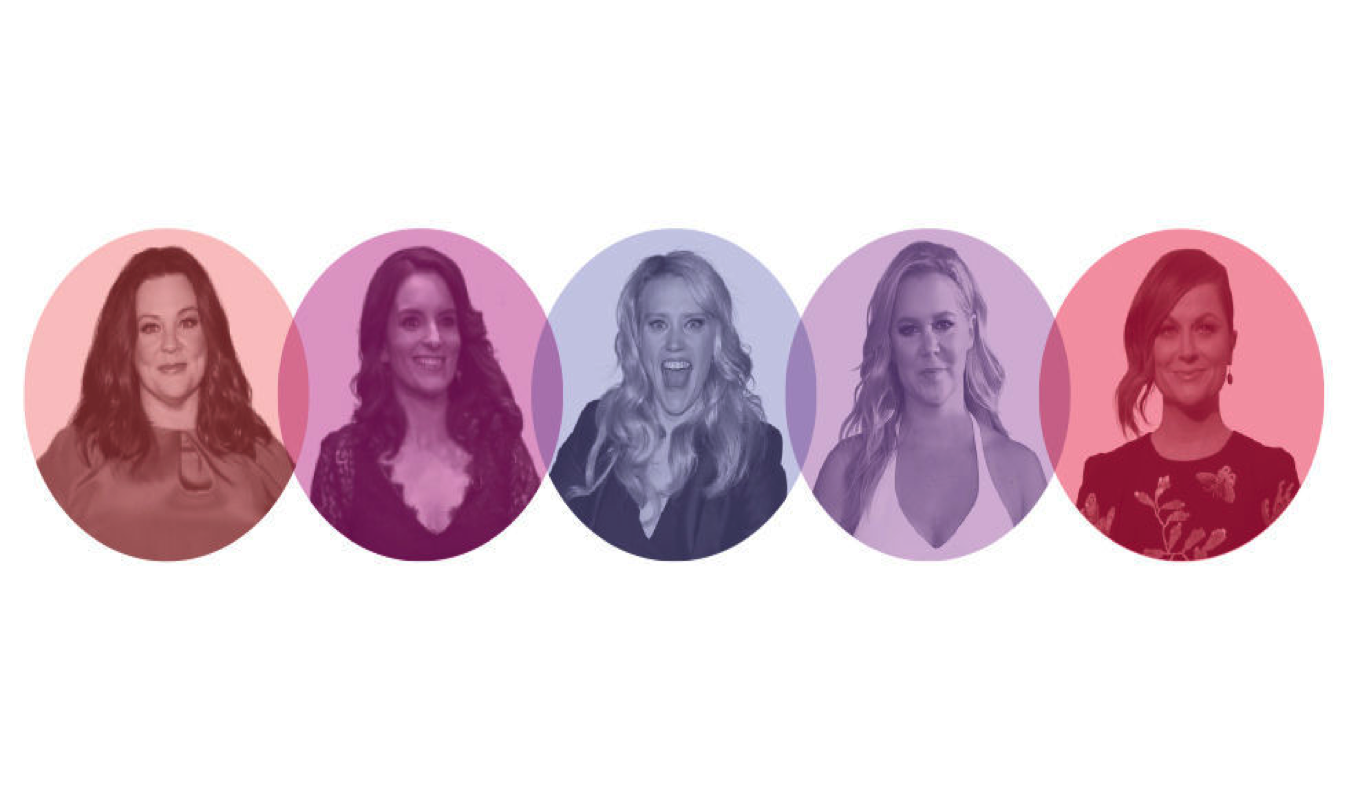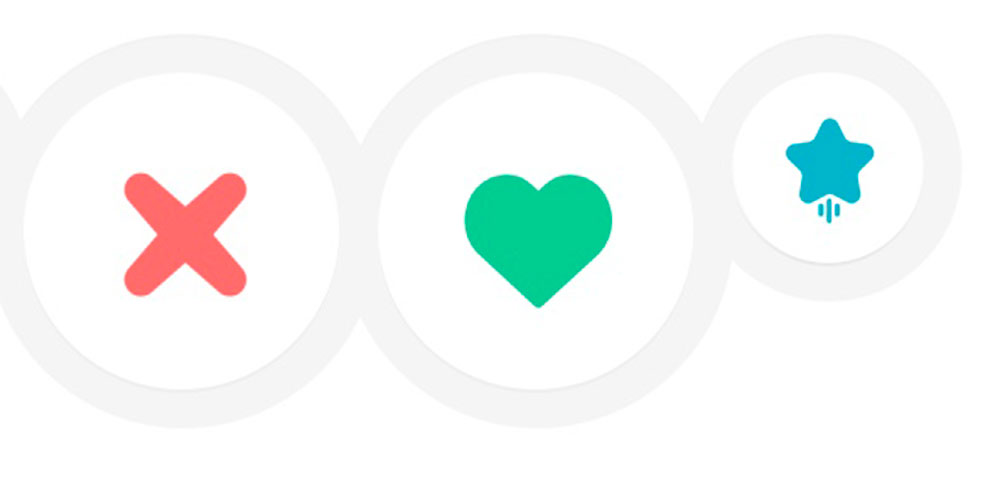America: How Greed Trumped Freedom
Much has happened over the past week as a result of Donald Trump being elected as President of the United States.
When I woke up last Tuesday morning to hear the news, I felt like the world had ended. Shock, depression, anger, fear. I felt it all at the fact that our nation, who appeared to progress so far against prejudice in the past 240 years (officially), was being torn apart. It seems as if all that hard work and determination to create and establish change was crumbling beneath us.
But this race was always more complicated than Hillary is good and Trump is bad. Throughout his candidacy, I viewed Trump as this disgusting racist, homophobic, sexist discriminatory piece of trash. I had the same negative connotations with those who supported Trump or chose to vote for him.
There are great deal of Republicans who voted for Trump because of the promise of a prosperous economy and strengthening middle class America, rather than strictly agreements on a discriminatory basis.
However, the overall outcome is a nation divided by greed. It is greed that has long dominated and continues to dictate our nation and the people that voted for economic change rather than social change and liberty and justice for all.
And while I still have strong negative feelings toward Trump, I dislike both Presidential candidates during the election race.
We, the people, were given two steaming piles of shit candidates and told to choose the lesser evil.
Hillary Clinton’s actions didn't remain true to her country. Lying and cheating to get what you want is the equivalent of greed.
Both parties fought hard against each other. However, both seemed to be largely after one objective: the title of President of the United States. The race between these two candidates proved to be selfish at the core when it came down to power. So why were many of us shocked that this major problem that continues to afflict our society dominated this election?
Because we believed in our own abilities to change a system that often cripples many of its inhabitants. Even middle class America, who have been victims of the economic system, chose the candidate they best sought fit to reform their situation.
However, Donald Trump’s platform for "change" based on a business man’s views feeds back into the revolving concept of greed.
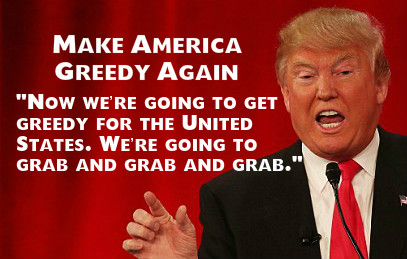
To complicate things further, some of the people who chose economic liberation are people we know, people we love. They are people who are capable of love and kindness. Yet, the promise of supporting one self or one's family financially won out; rather than realizing the big picture: freedom for all.
Hillary Clinton’s open arm stance on rights for all religions, races, nationalities, women, the LGTBQ community is essential and critical to this county’s well being.
The United States of American consists of a variety of people, not minorities, but people. They are our neighbors, our brothers, our mothers, and our best friends. They are us, and it is why we need to support one another. Because that is the only way we can properly function as a society, together.
The people that make up this nation who stand for equality and liberty are terrified to be who they are. Children are fearful, with the threat of their mothers and fathers deportation to the countries where they were born. Kids worry about going to school because of the taunting and chanting of white, male privilege in the hallways.
Making decisions by those considered to be voting adults, decisions that greatly affect children in America and taint the innocent lives of our country’s youth, it is not only majorly problematic. It is cruel and corrupts the good heartedness of children.
The majority of parents teach their children to do good and to do what is right. And yet, half the country made decisions for the good of the one rather than the good of the many.
It is an issue that has plagued our country for centuries. But in this election, greed has made a significant tear at our nation’s structure.
“The land of the free and the home of the brave."
These words sometimes used to describe the United States are now enforcing laws and the threat of repeals. It is making freedom circumstantial.
But that won’t stop us, each of us that are labeled as minorities or each of us that believe in equal rights for all, to keep fighting for the country that we are all apart of.
Do the clothes we choose reflect ourselves as a person?
What does what we wear say about us?
Do the clothes we choose reflect ourselves as a person? It seems that the clothes that we choose tend to make a statement to us and our personal sense of what we like, how it fits us individually, and of course the revolving door of trends that go in and out every decade; as well as the impression we want to make on the outside world. Clothing can also represent a sense of legality, authority, and prestige in certain uniform design choices.
Is our sense of style tied to something stronger than our cognitive decision to choose clothing patterns? According to an article published by the New York Times, that we think with our bodies as well as our brains.
In a series of studies conducted by Dr. Adam D. Galinsky, a professor at Northwestern University, he tested how clothing impacted individuals on their cognitive and psychological processes. In an experiment with 58 undergraduates, students were randomly assigned a white lab coat or normal street clothes; the students were then asked to spot the inconsistencies in a selective attention test. The results: those who wore the lab coat made significantly less errors than those wearing street clothes.
“I love the idea of trying to figure out why when we put on certain clothes, we might more readily take on a role and how that might affect our basic abilities,” said Joshua I. Davis, an assistant professor of psychology at Barnard College.
Or is it more simple than that? Is the clothing that we choose merely a result of personal taste and what we like. For many of us, comfortability is key. If I could, I would live in sweatshirts, leggings, and converse or boots. However, this isn’t always socially acceptable.
Society has taught us what does and does not look appropriate in certain situations; for example, weddings, funerals, the work place; but even some places of work are starting to accept jeans as a viable clothing option at certain places of employment
This begs the question: what else is society telling us about what to wear?
Confidence also plays a key role in what we choose to wear. It influences how we carry ourselves and how we interact with others. Sizes small through large and “regular" sized pants is a major limitation in our society.
Sizing in certain clothing stores like Abercrombie and Fitch, who just recently starting carry above a size 10 in women’s clothing, have started carrying larger sizing for the main purpose of selling product.
There are many components that factor into how we choose to dress ourselves everyday. Personal taste, self confidence, and how we believe others view us all play roles in the decision making process. Yet, it is important to note that “others” exceeds outside of the people you pass by in everyday life. Society largely impacts how we view ourselves in respect to clothing.
Top 5 Scariest Places to Visit This Halloween
Now that it is the month of October and with Halloween approaching, haunted houses filled with fake zombies and dropping skeletons are opening to the public. But what about the all year-round locations that have claims of hauntings? Considering the local clown outbreaks in Chicago, the normal, everyday parks may seem the most terrifying to some people. But here are a few examples of some of the most noteworthy real-life horror locations in Illinois.
1 Bachelor’s Grove Cemetery in Midlothian, IL —> Among the Rubio Woods lies one of the most haunted cemeteries in Illinois; maybe even one of the most haunted cemeteries in the United States as argued by history lovers and ghost fanatics. Bachelor’s Grove Cemetery first burial was Eliza Scott in November of 1844, before the Civil War. Newspaper reports have also stated earlier burials held at Bachelor's Grove. In 1935, the Blue Island Sun Standard published that William B. Nobles was buried in Bachelor's Grove Cemetery in 1835. However, Bachelor’s Grove wasn’t legally considered a graveyard until records of the cemetery came to light, after the property was taken over by Frederick Schmidt in 1864.
Since the 1960s, Bachelor’s Grove Cemetery has been closed to car traffic; making it even more terrifying that the only way to roam around this graveyard is by foot. Locals over many generations report sitings of phantom cars, ghosts, glowing floating orbs; and more notably, legends of a ghost known as Madonna of Bachelor’s Grove, the Caretaker who supposedly lived on the grounds killed his family; the Hook Man, the farmer and the horse who supposedly drowned in the Bachelor’s Grove pond, the phantom dog, etc. There has also been factual evidence present of satanic rituals and grave openings/robbings at Batchelor’s Grove since the 1960s.
2 Peoria State Hospital in Bartonville, IL —> Peoria State Hospital, formerly known as the Illinois Asylum for the Incurable Insane, was active between 1902 to 1973. Because the hospital shut down in the early 70s, there isn’t too much factual information accessible online about the history of the establishment. Many reports, including the leading Doctor Dr. George A. Zeller of Peoria State Hospital, speaks of strange occurrences inside the hospital during its time of operation. One of the incidents being in 1910, when a patient by the name of Manual Bookbinder passed away. At Bookbinder’s funeral, numerous witnesses in the crowd, including Dr. Zeller, reported seeing Bookbinder’s ghost standing near a tree. According to Dr. Zeller, the funeral procession had to open the casket to verify that Manual Bookbinder, or Old Book as they called him, was in fact still inside his coffin.
3 Benedictine University in Lisle, IL —> Benedictine University, formerly known as St. Procopius College, was established by the Benedictine monks in 1887. The University’s nearby wooded area, along with Lake Saint Benedict and the college’s local cemetery emphasize the creepy feel of the campus. Ursula Bielski is a former Benedictine University student, historian, author, and founder of Chicago Hauntings Inc.; Bielski has strong credibility as the leading figure in the Chicagoland’s folk lore. According to Bielski, numerous students even tried to contact a ghost/spirit through the use of a ouija board. Reports of rumored exorcisms, alleged deaths on campus, and other supposedly strange occurrences have led some to believe that ghosts roam the campus of Benedictine University.
4 Joliet Correctional Center in Joliet, IL —> For nearly 150 years, Joliet Correction Center was home for small-scale criminals to noteworthy killers; including the infamous serial killer John Wayne Gacy. Gacy was sent to Joliet Correctional Center before being transferred to Stateville Correctional Center. The prison first originated in 1858 as a replacement for Alton, Illinois’ first ever state prison. Over time, Joliet Correctional Center became one of the nation’s largest prisons. The prison closed from needed cut backs in the corrections budget. But is the abandoned prison really haunted by supposed stories of ghosts; or is it the fact that it is an abandoned prison that people create these folklores?
5 Iroquois Theater and Death Alley in Chicago, IL —> On December 30th, 1903, the Iroquois Theater burned to the ground after a lighting issue turned out of control. During the night of the fire, about 2,000 people sat inside to watch the musical “Mr. Blue Beard.” That December night, over 600 people died as the fire continued to blaze. The new building that stands in the Iroquois Theater’s place is the Oriental Theater. Some people have claimed to hear screaming and other strange noises inside the theater; others have told stories that exist in the alley behind the theater, which is known as Death Alley. Some have said to have seen the ghosts of those who died in the Iroquois Theater fire over 100 years ago, lingering in the alley.
Do you agree with our list? Are strange, supernatural elements lurking in these supposedly haunted hotspots, or are these just stories of legend and folklore? Many of us might just have to visit these places to decide for ourselves what horror lies behind these stories.
Online Publication and The Newspaper Industry
Over the last 70 years, the ways in which we are informed about news and current events has changed drastically. With the invention of the television and the computer, how we are informed is also changing. Now, we spread information through the internet, a wildfire of tweets and shared blog posts and videos. Even the majority of well-known newspapers like the New York Time, the Chicago Tribune, and the L.A Times have all created websites that display their online articles.
In this world in which we are apart of and the societies in which we make up, there is knowledge all around us. This access to knowledge is growing tenfold with all of the material and tools we have at our finger tips.
However, it is essential for any and all publications to establish one major concept: credibility. Credibility is trusting what the reader is saying because they have established a sense of credibility with their audience. This is shown through using personal experiences, providing links to reputable sites, and refraining from the use of Wikipedia. These are just a few small examples of how to establish a writer as trustworthy in the online community.
Based on my own current experience from working in both an online publication as well as the newspaper industry, there will always be pros and cons to each side that the other side lacks. In the newspaper industry, local newspapers hold great value in the strong, personal relationship between the newspaper and the reader. You have a better sense of who is reading these articles because they're your family, your friends, and your neighbors. And there’s a comfort in that.
The first United States newspaper, the Boston News Letter, originated on April 24, 1704. This piece of media not only discusses events in history, it is history.
Although you can share articles with this same familial audience, there’s a crucial difference. The world of online publication is a two-way, communicative street. And as a writer, that can be intimidating. Complete strangers have the power to verbally abuse you, and many act on that capability.
Yet, there’s also a large sense of freedom in writing online. Self-starting, entrepreneurial bloggers do not have expectations to stay within a company’s tone or set material topics. They are their own company, their own brand. They are the creators.
Even the concept on online publication has a wider scope of freedom; publications in different topics of interest exist, from music to online magazines to home and lifestyle blogs. It’s an expansion of the newspaper, providing readers with a large variety and quantity of subjects and issues to dive into.
Whereas in the newspaper industry, you are in a co-dependent relationship with the assembly line of co-workers; each have their own stake in contributing towards making that week’s deadline in order to get the paper out. There’s a sense of team work and camaraderie there that can’t quite be duplicated in the online world of publication. It is important to preserve that communal bond of sharing local news. It is also important to maintain a plain field for evolution in this industry, without one platform pushing out the other.
Between 2003 and 2012, the print ad revenue in newspapers has decreased by more than 50%. Readership has also decreased between 10 and 20% over the last 15 years among all age groups; these age groups consist of individuals from the 18-24 year old bracket to ages 65 and older.
However, with this new age of online media and the rising generation of younger readers and creators, a question comes to mind. Can we still preserve the newspaper industry of both big booming companies like the Chicago Times along with smaller publications like Southtown Newspapers or Southwest Messenger Press? Could the extension of these papers onto online platforms help to sustain this powerful medium that has informed people around the world for hundreds of years? Maybe we need to start considering newspapers in both print and online form, rather than print vs online publications.
Feminism Taking A Stand in Comedy
There has always been a long-existing stigma surrounding funny women and women in comedy within our society. But why is it so surprising that women can be funny?
And why are male comedians who make light of subjects like rape and sexual abuse not given a second thought? Is it because our society views degrading behavior towards women as “just joking?” It isn’t “just joking.” And thankfully, the strong presence of feminist female comedians and their even stronger comedic style addresses these feminist issues.
Comedian Jessica Williams of "2 Dope Queens,” who also makes appearances on the Daily Show, expresses her pro-feminist comedic style; it shines light on the issues, while making the audience laugh. These are two separate entities, rather than taking these critical issues lightly through the crutch of comedy.
Jessica Williams also stated in an interview that she was a victim of sexually harassment, and by a famous actor; this shows how even a strong woman of color, not only in society but as a powerful woman in television, can be taken advantage of by a man. But it's William’s courage to share her story, rising against those men that feel they can control and silence women. But Jessica is one heroing example of women who stand up and fight.
Another feminist female comedian worth mentioning in this article is Emily Heller. Heller discusses feminism and feminist issues as a comedian. She talks about the cliches associated with feminists/feminism and the real issues. Heller presents these issues in a way that is funny but doesn’t take away from their value or make them less meaningful through the use of comedy.
One of the most recognizable female comedians in the past year, Amy Schumer, has also faced issues of slut-shaming in relation to comedy. In one interview with comedian and actress Amy Schumer, the male interviewer had the nerve to call Train Wreck "autobiographical." He then proceeds to say that Schumer’s performance in said movie portrays her as a “skank” and that it is a depictions of “the character of the movie.” Amy Schumer’s comedic style is hilarious. She uses her own personal experiences to poke fun at herself and make light of her insecurities. As a result, she make others laugh. The audience does not laugh at her expense, but at the delivery of her jokes. It makes us, the audience, look at ourselves and attempt to take our own insecurities as light-heartedly as Amy Schumer.
The presence of feminists comedians is not only existent in females, but also feminist male comedians. Comedians Seth Meyers and Jay Baruchel have said some of the strongest women they know are those they’ve worked with. Even Louis C.K. has addressed feminist issues in his comedy stand-up performances. “Globally and historically, we’re (men) the number one cause of injury and mayhem to women. You know what our number one threat is? Heart disease,” Louis C.K. said.
This joke addresses that there is a historically proven problem in which men treat women in our society; however, Louis C.K. has had seemingly mixed views on his feminist position, or at least in terms of those views he has outwardly expressed.
But some men in the public eye that consider themselves as feminists remain firm on their position as such. “I’m constantly annoyed by how terribly written most females are in most everything - and especially in comedy. Their anatomy seems to be the only defining aspect of their character, and I just find that untruthful and it straight up offends me. A lot of the strongest people I know are chicks. As a viewer, I get a kick out of watching actual women. And I like writing strong women. Because as a straight male, there’s nothing more attractive to me than a strong girl,” says comedian and actor Jay Baruchel.
It is men like Baruchel who not only recognize women's ability to be talented within the world of comedy; but also men who work alongside these strong females comedians, and treat them as such.
Makeup: Creative or Crippling
Makeup first seemingly appeared a in Ancient Egypt, smudged around the eye in what we today would call eyeliner. But back in the early ages of BC, Egyptian women used kohl. Kohl is a substance made out of easily accessible resources at the time. Such ingredients include lead, ore, copper, burn almonds and ash, among a few others. Kohl became the first true female makeup product, used as eyeshadows and an eyeliner. Kohl is also seen as an ancient eyeliner in India during the Gupta Age from the 3rd to the 5th century A.D.
This cosmetic also became popular as an eyeshadow in Ancient Greece. Believe it or not, having a unibrow in Ancient Greece was considered to be a thing of natural beauty. Greek women during this period even went so far as to cosmetically apply fake animal hair in between their brows.
Lipstick has been existent since prehistoric times, using it as a lip taint and made from natural resources. Such material includes fruit and plant juices, and even animal blood. It it also noted that Mesopotamian women were the first true creators of lipstick. They used a method of crushing jewels to make it into bold lip stains. Lipstick gained popularly in Ancient Egypt and Ancient China. Yet, it was the Elizabethan era that lipstick gained a stronger global popularity. A strong lip was the feature that stood out the most. It contrasted the pale, powdered skin, to appear more pale, and the lack of eye makeup and eyebrows.
We then skip to the Victorian Era, where minimal to no makeup was valued in society. Women who could afford it, used face cleansers to achieve the look of clear, young, and healthy skin. Any type of rouge or blush during this period could be viewed as tacky or pertaining to low class.
[youtube id="g08-_NExOX0"]
From the beginning of makeup during the prehistoric era, cosmetics have been made to change an individual's appearance. Hunters used makeup to better camouflage themselves while tracking down prey. Others employed cosmetics to show their devotion to their gods and their beliefs. Even Ancient Egyptians used eyeliner as a statement of class and power, in both men and women. Some scientific research even suggests Egyptians may have used it as a preventative for bacterial infections. But somewhere along the way, makeup became a social pressure and an expectation for women to wear makeup.
Makeup is becoming more openly accepted for men to have the creative freedom to explore and use makeup. However, the concept around makeup can be crippling for women. Women are expected to live up to higher standards than possibly attainable. Many boys and men don’t have the social pressure put on them of in terms of wearing makeup. However, this does not mean that that isn’t a social pressure of conformity in itself for men.
One study showing men and women’s skin reveals that women having a lower pH in terms of their skin. This means that it is overly acidic and oily in nature. Such a report of genetically born females tends to be linked to female hormones, menstrual cycles, and pregnancy. The pressure for females to have “perfect” skin is a struggle and is unbearable for many women.
I remember getting ready for a party once. I was so upset with the appearance of my skin after picking at it all week. Despite trying to cover it up, I just couldn’t. I ended up staying in my bed in the dark, and watching Gilmore Girls re-runs all night. All I could think about was that I didn’t want a room full of people looking at me and thinking “ew.” Even though that is completely untrue and no one could give a single fuck about what my skin looked like. But my own psychological obsession around this concept of women needing to have perfect skin to openly co-exist was falsely stuck in my head.
While makeup can be fun to experiment with, I believe that the conceptions surrounding painting your face, so to speak, should be fun. It should not a social pressure or a fear of not looking up to other’s standards when in public. The presumption that all women have to walk around with defined brows or a sharp winged eyeliner or contouring that is “on fleek” every time they walk out of the house is ridiculous. While all of these cosmetics may enhance your beauty, it is not the foundation of your beauty. You are.
Online Dating: From the 90s to Now
This week, I decided to delve into the ever so popular topic of online dating. I wanted to know if this “hook-up” culture that is often referenced in our society, and if it's actually happening as much as it is discussed. I was also curious whether advances in technology could be the result of changes in the dating game. So what is the online dating scene like, both for millennial as well as long-term online dating users?
Among the most popular and heard about dating sites include eHarmony, Match.com, Tinder, Bumble, and OkCupid. Eharmony first appeared in 1997 by psychologist Dr. Neil Clark Warren. Warren's has spent 35 years practicing and counseling thousands of married couples. Match.com originated in 1995, serving as one of the first major online dating sites for over 20 years. This site also paves the way for new online dating platforms in a way. According to Match.com, 44% of adult Americans are still single and 40 million Americans use online dating services. These statistics are drawn by Match from the U.S. census.
The infamous Tinder first arrived on the scene in the spring of 2012, successfully taking on a new generation of online dating, so to speak. But is it just a hookup site, or is it evolving since its initial launch? It is this question that I will explore in my research of online dating. Although OkCupid has been a part of the online dating sphere since 2004, there is only an estimate amount of 1 million active users from the site. There are also no age brackets. A 50 year old can message a 20 year old. It doesn't allow the user to choose their age of interest.
Bumble, despite it's some-what recent launch in December 2014, has surmounted over three million active users reported in March 2016. The starts of Bumble's creation is a result of Tinder co-founder Whitney Wolfe, who decided to leave the company. Wolfe's charged her boyfriend and co-founder of Tinder, Justin Mateen, with sexual harassment. Bumble presents a new, feminist approach to dating, allowing the woman to make the first move. Only women can send the first message. The platform consists of different facets for different relationships. It offers different features that enable users to engage in their choice of relationship, whether it's romanic or friendship based. The company is also looking to encompass the LGBTQ community, but has yet to do so.
OkCupid released the ‘Identity’ project, motivating users to start discussions in relation to gender and sexual orientation. However, this seems to be the extent of the involvement of the LGBTQ community within these dating sites. None of these forms of online dating has seemed to make any notion or movement to accommodate individuals with gender identities outside the gender binary. Nor does it acknowledge the diverse range of sexual orientations. It isn’t as simple as having an attraction to “men” or “women” or “both.”
Recently I joined Tinder, partly for the purpose of writing this article, partly out of curiosity. And partly because as a single person, Netflix can only entertain me so much. In my case, the simple swipe of a button based largely off of appearances heightens expectations. It also limits those you would otherwise consider if you had met for the first time face-to-face. However, such sites and apps give singles a direct road that surpasses two of the biggest questions when it comes to dating. Those questions are: are you single and do you have an interest in that person.
Yet, reports show that in 2016, that only 13% of Tinder users claimed relationships lasting longer than a month. These statistics stand, despite Tinder obtaining 9.6 million daily active viewers reported in 2015. This report also states that 20% of Tinder users are using the app for a hook-up. Those looking for a hook-up is split almost half and half with 27% of users are looking for a significant other. And a whopping 53% of users are using Tinder to find friends.
According to OkCupid statistics in a report published by datingsitesreviews.com, monogamy reports from users of the app have decreased by 12% since 2010.
So is this new generation of online dating really as successful as it was in the 90s? It doesn’t appear to be that way. Based off of this research, it seems that it is simply the “hook-up” generation that has taken hold through these new platforms.
The Hunt for Information: Online vs. Offline
Over the past two weeks, I have been visiting the great north woods of Copper Harbor, Michigan. The peaceful, quiet town, free from anxiety and pollution, is also free from 4g and wifi. So I have decided to write about the experience of writing without wifi and what this experiment would entail for my research. To do this, I decided to check out local libraries and compare the resources available there to those available online.
Upon first exploring the Copper Harbor library, which was right down the road from my cabin, I was surprised by the selection. Reference works from Britannica. Webster’s New 20th Century Unabridged Dictionary. The Random House Dictionary of the English Language. All for a population of only 50. There was also a wide art section ranging from Warhol, to Eskimo Art, to Matisse and Manet.

The library had a whole separate room for Philosophy and Existentialism. It overflowed with the works of Aristotle, Blaise Pascal, Karl Marx, and Martin Heidegger. The library also contained volumes from historians like Edward Gibbon and Plutarch. The stand-in librarian explained that the library's owner, Elsebet Jegstrup, was a philosophy teacher. She donated the majority of the library’s materials from her personal collection. Jegstrup had even included printed-off PDFs from philosophical articles, an interesting way in which online resources trickled into the offline world.
As it turned out, Jegstrup was not alone. Locals donated most of the books in Copper Harbor’s library collection. At first, I assumed that, excluding Jegstrup's eye-opening collection, these donations would mostly consist of fiction. But when I stopped by the library a second time, I noticed a table marked "$1 Book Sale." The sale contained school-issued psychology books, books on politics and political theory, and staples like Jane Eyre and Hamlet. There was even some Dante.

The library also offered a generous religion section. The substitute librarian who was in during my first visit to the library stated that he was a retired preacher for an Episcopal church. He told me that he lives locally, between this town (Copper Harbor) and the town of Eagle Harbor. He also mentioned that he used this library as his main source of information and to dig up resources for his sermons. The small, house-sized library also contained an array of language books, with dictionaries and translations in French, Spanish, Danish, German, and Italian. Although this section only consisted of about 10 books, it offered a larger selection than that available at the Houghton library, which was to be the site of my next visit.
On Thursday, I made my way to the Houghton Portage Lake District Library, about an hour away from Copper Harbor.

While I was there, I decided to go through the bookshelves and check out the local resources. The broader sections covered birds, astronomy, archeology, western civilization, cooking, child-rearing, dog-breeding, naturalist perspectives on animals and plant life, dictionaries and thesauruses. Librarians had dedicated bookcases to art and home projections and collecting, along with separate sections on artists like Davinci and Rembrandt.
The library had records on music too, covering genres like jazz, the history of women in country music, and famous musicians like Bob Dylan and the Beatles. There was also a wide range of books on sports. These covered coaching and drilling, but also harrowing sports stories like Pat Conroy’s autobiographical “My Losing Season” and biographies like John Feinstein’s “Next Man Up.” And, of course, there were over two dozen of Chilton’s volumes on vehicle repair manuals through the 1980s and 1990s.
This library also included an array of publications on Presidents, covering everyone from George Washington to Lyndon B. Johnson. This section even provided a handful of Bob Woodward books on President George W. Bush. The war section included at least 25 books on the Holocaust and World War II. There was also an ample supply of books on the Civil War. However, aside from these two focal points, the war section didn’t seem to be very extensive.
Scattered miscellaneous books on other, less common topics were shelved amongst other unrelated works. I found two books on Chicago, no longer than 400 pages each. My hometown was one of the few major cities covered specifically. The others were London and New York City. Sections on Ancient Egypt, Greece, and Rome, as well as the Middle Ages each offered only a few books. The library also housed four books on Mayan civilization.
The Houghton library’s geography section had numerous books on Britain, Ireland, Mexico, the U.S., Norway, and Sweden. However, the more I looked at this shelf, the more I realized that few of the books covered anywhere but North America, the U.K., and Scandinavia.
The Portage library also had a minimal literature section. It housed a few canonical British works, a random group of Alfred Hitchcock mysteries, and the Oxford book of 20th Century Ghost Stories. Although Houghton provided a strong biography and autobiography section, the library seemed to offer the same number of takes on Mark Twain's life that it did of his works, four.
The library piled education texts next to subjects ranging from the evolution of online corporations like Google and eBay and books on the Chinese government's international relations. Librarians shelved books on child illnesses and disorders, ADHD, and hyperactivity with books on the history of wood. Those about Houghton's booming copper business shared shelves with books on solar and fusion energy. Books about American health and dietary habits lay side by side with six or seven publications on nuclear safety.
There library also had a section dedicated to health. This primarily featured books on aging, weight loss, and home remedies. There was also a large variety of books on medical topics such as alzheimer’s and cancer. However, there seemed to be a smaller collection of available resources covering autism. And the few texts discussing topics like anorexia and depression were shelved here too, with no division between physical and mental health.
In contrast, the internet allows near-global access to information stored physically in specific locations. This makes it possible for researchers to use the resources of cities they might not have the means to enter. Many national studies are also widely accessible because of their availability online. This allows internet users to find information on various topics easily with the aid of a search bar. In-depth studies by doctors and researchers have limited readership when restricted to the physical sphere, but when they are added to the large world of online resources, even laypeople can find and peruse these works. So, in the absence of internet access, one stands to lose a very wide pool of source material and information.
But those who lack access to online resources, may rely on experts and other researchers studying the topic at hand. These people can often provide background information, anecdotes, and accounts from real life experiences, as well as context for the information in studies and papers. These contextualizations in particular are often hard to find online.
However, although books are prime learning resources, they have their downfalls. Books can contain false information. The same may be said of other offline information sources like personal interviews. Personal views may obstruct the nature of a study or skew information. So can personal motives. Such is the case in police reports tainted by lying tactics. Politicians who have notably lied while in office, such as Richard Nixon or Bill Clinton, also come to mind. Researchers may detriment their information's reliability by using only one treatise, interview, or source. But this problem stems less from the offline nature of these resources and more from the inherent limitations of using only one perspective in research. Editors and scholars generally vet and fact check reference works and published studies.
This is not always the case with online information. Additionally, the line between reliable and unreliable sources can blur online. I recently discussed the reliability of information released on Twitter, where some accounts don't hesitate to release faulty information, although only 140 characters worth, to the masses. But not all of these flagrant tweet-lies come from fake accounts, purposely misleading "news" accounts, or satire accounts retweeted out of context. Hackers write some of these fake tweets using ordinary Twitter accounts.
More than anything else, location, demographics and interests determine the resources physically available in places like Copper Hill or Portage. Too often providing unbiased perspectives is under-prioritized. This is really where the online supersedes the offline. Individuals far from large cities can find many of their resources online using personal or local library computers. However, this access is often harder to come by in towns like Copper Hill.
The internet will always have both positive and negative impacts on our daily lives. It will continue to provide both accurate and faulty information. But the great online globe's resources and support will continue to aid researchers. As will libraries, books and scholars. Researchers, whether they be students, professionals, or just curious individuals, stand to gain from both online and offline sources.

